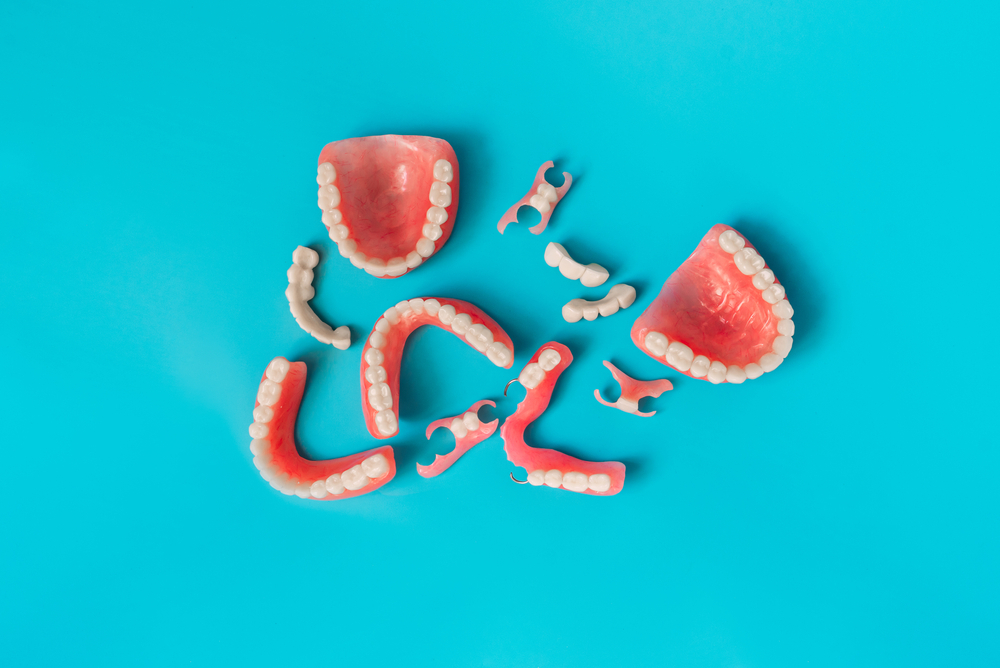Dental flaws, though not uncommon, can significantly impact your lifestyle. The imperfections make you self-conscious about your smile and leave a mark on your confidence. But, lucky for us, the advancements in cosmetic dentistry have revolutionized the dental arena. Transforming smiles is now easy and affordable.
This blog will help you explore why and how cosmetic fake teeth can give your smile a makeover.
Decoding Dental Prosthetics: What Are Fake Teeth Called?
Dental prosthetics or fake teeth, as they are commonly known, are artificial replacements for damaged or missing natural teeth. The purpose of these cosmetic fake teeth is to restore the functionality and aesthetics of a person’s smile. As you continue reading, you’ll discover a range of cosmetic dentistry options available to help you achieve your desired dream smile.
Exploring the Array of Fake Teeth: Unveiling Types
A variety of tooth replacement options are available in dental cosmetic treatment. From complete dentures to individual teeth, the multiple options restore full oral functionality. The dental techniques vary in cost, complexity, procedure, and dental issues they address. Your dentist is the best person to help you with the correct dental process based on your dental goals. They can provide a comprehensive dental examination and cleaning to further enhance your oral health.

In the meanwhile, let us understand the different types of fake teeth available:
Full Dentures
Full dentures are a complete set of fake teeth that look real and are a common option for aged people. Typically, the procedure involves fitting a plate of acrylic or resin teeth over the roof of your mouth. These dentures are held in place through suction and are easy to remove and clean.
Sometimes patients may use dental adhesives to strengthen the hold of these dentures. If you have a large number of damaged or missing teeth, dentists may consider this fake teeth option for you. They remove the remaining teeth prior to fitting in the full dentures. Since the mouth needs time to heal, it can take approximately a couple of months to retain full functionality.
Partial Dentures
Partial dentures are a series of teeth linked via metallic or acrylic bands. These cosmetic fake teeth are also known as the Maryland Bridge. The procedure involves connecting the denture with existing teeth using resin cement or metal clasps. The band is stuck on the rear part of the teeth to keep it invisible. Doing so makes the procedure more aesthetic.
Partial dentures are a frequent solution for replacing the missing teeth in the front portion of the mouth.
Dental Implants
Dental implants are the permanent cosmetic dentistry solution for tooth loss. In this procedure, the surgeon connects a metal screw to the jaw bone to place the implant. The metallic screw serves as an anchor for the fake tooth.
The procedure is a bit expensive, but it is worth every penny. Dental implants, once placed, do not slip or move. They look like a replica of your natural teeth and have functionality almost at par with them. The fact that dental implants decrease gum wear and rubbing is yet another reason for their popularity.
Dental Crowns
Dental crowns are another form of cosmetic treatment to correct your dental imperfections. While they do not constitute complete fake teeth, they are caps that fit over your original teeth. These caps strengthen and repair the damage to your original teeth.
Dental crowns are used in various cosmetic dentistry procedures to achieve the desired results. For instance, crowns are attached to the implants or bridges to attain a natural-looking tooth. The crowns are available in different materials. But, the different materials account for the cost and longevity of the artificial teeth.
Also, since crowns need to reshape your natural enamel, the procedure might cause slight discomfort and is irreversible. Therefore, it is crucial to take extra care of your crown smile once the procedure is complete.
Dental Bridges
Dental bridges are prosthetic appliances that serve as replacements for one or more missing teeth. There are two dental crowns on either side of the gap, with fake teeth in between. The bridge is designed in a way that fills the empty space and restores the functionality and aesthetics of your smile.
The dental bridge procedure involves preparing the adjacent tooth for crown placement. This tooth acts as a support for the bridge. With proper oral hygiene practices, a dental bridge can have a lifespan of up to 10 years.
Dental Veneers
Dental veneers are the perfect embodiment of artificial teeth that look real. Veneers are custom-made thin shells of tooth-colored materials. Dentists cover the front end of your teeth with these specially crafted covers to hide and repair the dental flaws in your smile.
The value of veneers lies in their ability to shield your teeth from stains and damage while hiding any gaps or chips in your natural enamel. But, placing veneers requires shaping your tooth and removing some of the natural enamel. The procedure is thus irreversible.
Irrespective of the cosmetic dentistry procedure you choose, one vital fact that remains unchanged is the need for regular dental checkups. Maintaining your routine checkups will check the growth of gum infections and increase the lifespan of your fake teeth.
Behind the Scenes: What Are Fake Teeth Made Of?
Dental prosthetics or fake teeth are made out of various materials depending on the purpose and type of the dental procedure. Removable replacements like full and partial dentures are commonly crafted from acrylic resin. It is very durable and has unparalleled natural appeal.
Fixed dental prosthetics like implants, crowns, and bridges use materials like porcelain, ceramic or metal alloys. But, these days, porcelain is the most favored choice owing to its natural tooth-like appearance and stain-resistant properties. Also, ceramic is not far behind, with excellent aesthetics and durability. Due to their incomparable strength and durability, metal alloys are the choice for crown and bridge bases.
But, despite the varied choice available, the final decision lies in the hand of patients. Factors affecting the choice of materials include desired aesthetics, functionality, budget, and patient preference.
All these materials account for the aesthetic appeal, strength, and functionality of the cosmetic fake teeth.
Natural Appeal: The Quest for Fake Teeth That Look Real
One of the primary reasons people seek cosmetic dentistry is their desire for a beautiful and natural-looking smile. But as they say, nothing in this world comes for free! While offering many benefits like restoring functionality, confidence, and your natural smile, fake teeth do have some drawbacks.
So, let us explore the pros and cons of getting cosmetic fake teeth for an aesthetic smile, and then you can decide the best course of action for yourself!
Pros:
- Enhances Facial Aesthetics: Missing or damaged teeth can significantly impact your smile, confidence, and facial structure. Fake teeth are your opportunity to reclaim all that is lost – from facial aesthetics to self-esteem. Technology advancements allow for customization, ensuring that the color, shape, and alignment of fake teeth closely match natural teeth.
- Enhanced Functionality: Missing teeth not only affect your facial aesthetics but also have an impact on the ability to chew and speak. Fake teeth enable individuals to reclaim their mouth functionality. People can again enjoy their favorite foods and indulge in interesting conversations without discomfort.
- Solution Over The Long Run: Fake teeth, with proper care and maintenance, are a long-term investment in your smile. Dental implants, in particular, are a permanent and effective solution for missing teeth.
Cons:
- Cost: Fake teeth are expensive, especially high-quality dental implants. But, this is just a one-time investment with lifelong benefits. Also, there are many options at varied rates. You can consult with your dentist for the best option.
- Time-Consuming Process: Getting fake teeth may need two or more sittings. And in the case of invasive surgery procedures, the healing time may exceed a month. But, once again, discomfort for a short span paves the way for a comfortable future.
From Temporary to Permanent: Can You Get Permanent Fake Teeth?
The short answer is yes! It is possible to get permanent fake teeth through dental implants. The process involves an invasive surgery, where metal posts are placed into the jaw bones to act as artificial tooth roots. These posts fuse with the bone to form a stable foundation for the prosthetic teeth.
Dental implants are a durable, comfortable, natural-looking, and permanent solution for individuals seeking a replacement for missing teeth.
How Long Do Fake Teeth Last?
With proper maintenance and care, all types of fake teeth have a long life span of more than a decade. But, regular dental checkups are essential for proper maintenance and re-evaluation.
How Much Care Do Fake Teeth Need?
The process of maintaining fake teeth isn’t much different from maintaining natural teeth. You must have a good oral hygiene routine, including regular flossing and brushing. In the case of dentures, it is better to remove them overnight and store them in the cleaning solution. This helps disinfect the dentures and keep them hygienic. Also, with fake teeth, you need to be a little cautious about chewing down very hard foods as they can crack the dental structure. And lastly, remember to keep up with your routine appointments at Gardner Smiles so we can keep an eye on your oral health.





